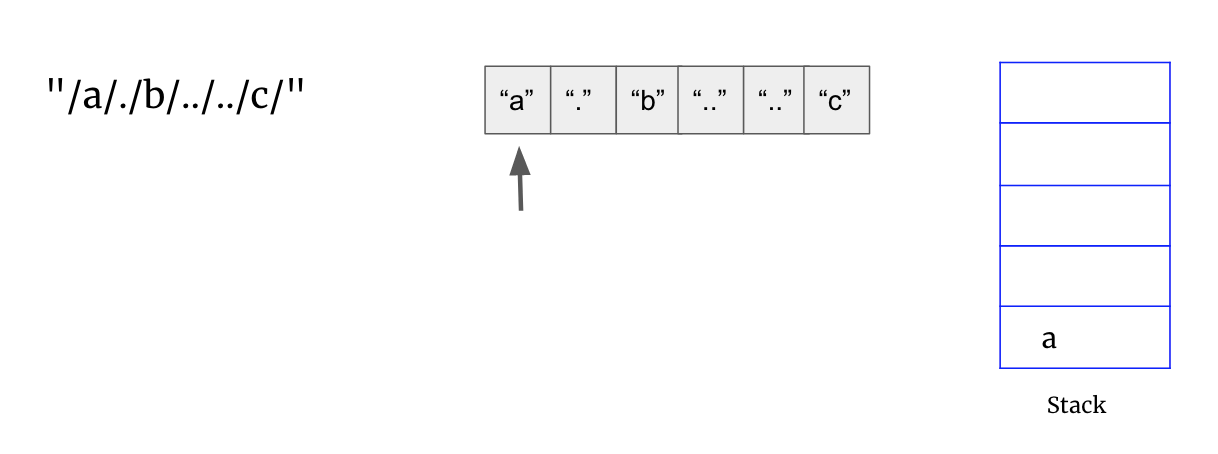Given an absolute path for a file (Unix-style), simplify it. Or in other words, convert it to the canonical path.
In a UNIX-style file system, a period . refers to the current directory. Furthermore, a double period .. moves the directory up a level. For more information, see: Absolute path vs relative path in Linux/Unix
Note that the returned canonical path must always begin with a slash /, and there must be only a single slash / between two directory names. The last directory name (if it exists) must not end with a trailing /. Also, the canonical path must be the shorteststring representing the absolute path.
Example 1:
Input: "/home/" Output: "/home" Explanation: Note that there is no trailing slash after the last directory name.
Example 2:
Input: "/../" Output: "/" Explanation: Going one level up from the root directory is a no-op, as the root level is the highest level you can go.
Example 3:
Input: "/home//foo/" Output: "/home/foo" Explanation: In the canonical path, multiple consecutive slashes are replaced by a single one.
Example 4:
Input: "/a/./b/../../c/"
Output: "/c"
题意
遇到"."的情况直接去掉,遇到".."删掉它上面挨着的一个路径, 求简化后的路径
思路
很接近real industry的题目
将input通过/分离出来, 利用Stack来模拟遇到"."和".."的情况






代码
1 class Solution { 2 public String simplifyPath(String path) { 3 String[] arr = path.split("/"); 4 StringBuilder sb = new StringBuilder(); 5 Stack<String> stack = new Stack<>(); 6 7 for (int i = 0; i<arr.length; i++) { 8 if (arr[i].equals("..")) { 9 if (!stack.isEmpty()) stack.pop(); 10 } else if (arr[i].equals(".")) { 11 continue; 12 } else if (!arr[i].isEmpty()) { 13 stack.push(arr[i]); 14 } 15 } 16 17 if (stack.isEmpty()) return "/"; 18 19 // stack -> result String 20 while (!stack.isEmpty()) { 21 sb.insert(0, "/" + stack.pop()); 22 } 23 return sb.toString(); 24 } 25 }




